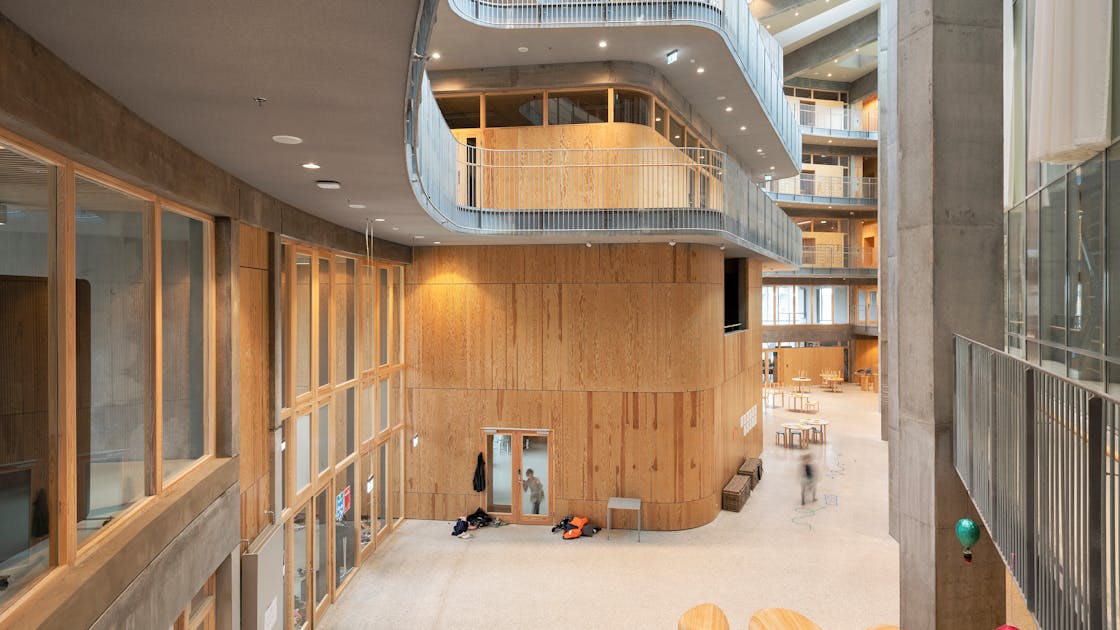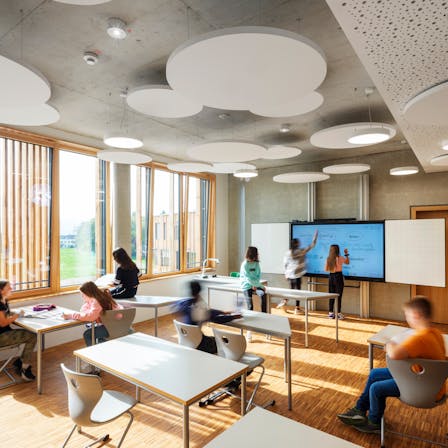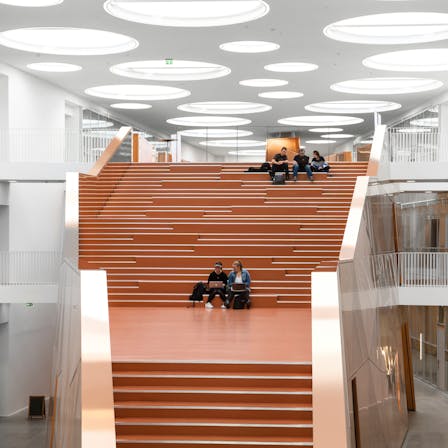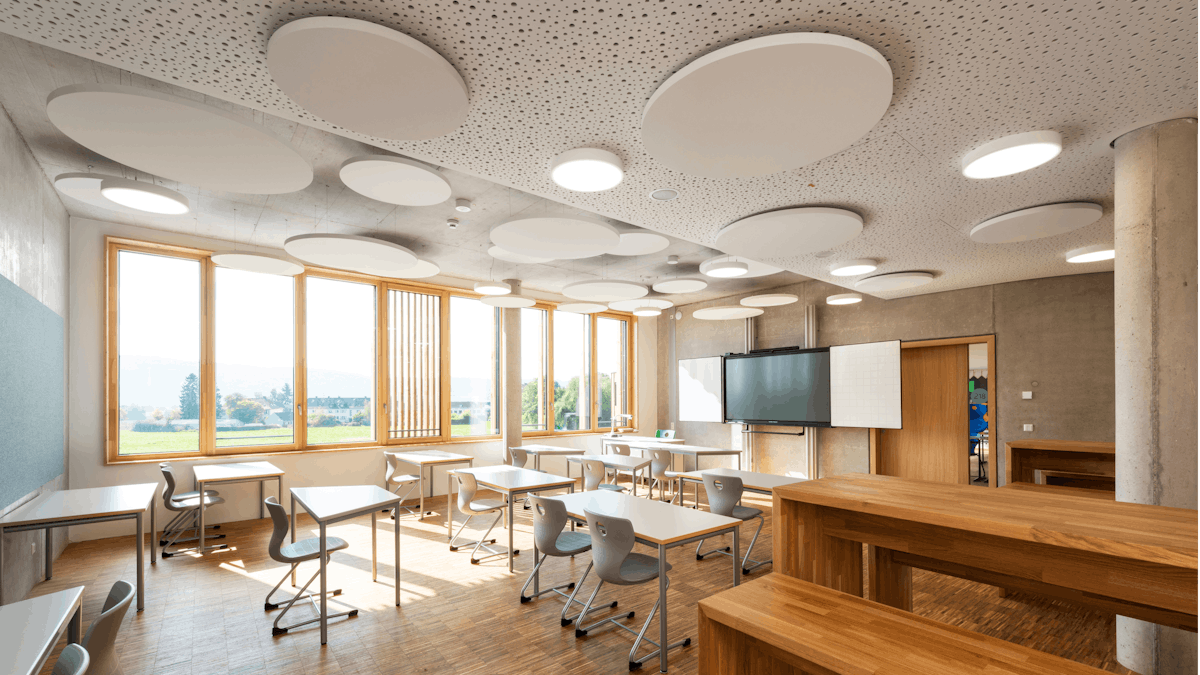

High-performing acoustic solutions foster well-being for both students and staff in schools, universities, early education centres, and other educational facilities.
Download Acoustics in Education Guidechildren said they could hear their teacher more clearly in an acoustically-treated room*
the reduction in stress-related symptoms after an acoustic intervention in a pre-school**
Sourcesthe speech transmission index (STI) of teachers in an acoustically-treated classroom, allowing for normal vocal efforts***
When combined with inclusive design elements, high-performing acoustic solutions help to result in schools, universities, and other learning facilities that are comfortable for everyone.
High noise levels aren't just bothersome – they also lead to poor listening conditions that comprise speech comprehension, word recognition, and ultimately, academic performance. Poor acoustic conditions have also been associated with reduced short-term memory and reading skills. Acoustic wall and ceiling solutions absorb sounds to improve speech intelligibility, making it easier to hear and understand what's being said.

Poor classroom acoustics can cause both physiological and emotional stress-related symptoms such as fatigue and headaches, particularly for students who are sensitive to excess stimuli.**** Acoustic absorption measures minimise noise disturbances to create learning environments that are comfortable for all types of learners.

Hearing, vocal, and mental health are at risk for teachers who spend significant time instructing in poor environmental conditions day in and day out. An acoustic strategy can create comfortable, empowering workplaces that shape staff mood, performance, well-being, and long-term physical health.

Product materials, circularity, and durability are all necessary considerations in designing comfortable educational environments, and they’re also required in green building certifications. Long-lasting products that can be recycled indefinitely are key to sustainability in new constructions and retrofit projects alike.

Each and every area across schools and universities contributes to student well-being and performance. Click on the room types below to learn more about the unique way in which acoustic comfort plays a role.

01
02
03
04
05
06
Rockfon acoustic solutions help to develop comfortable, clean educational facilities where students are empowered to listen and learn and teachers are comfortable to instruct at their very best.
See how schools, universities, daycares, and other educational facilities are introducing acoustic comfort to their different spaces.
|
* |
Peng, Jianxin, Siu-Kit Lau, and Yiming Zhao. 2020. “Comparative Study of Acoustical Indices and Speech Perception of Students in Two Primary School Classrooms with an Acoustical Treatment.” Applied Acoustics 164 (July): 107297–97. https://doi.org/10.1016/j.apacoust.2020.107297. |
|
** |
Persson Waye, Kerstin, and Jonas Karlberg. 2021. “Sound Quality Characteristics of Importance for Preschool Children’s Perception and Wellbeing after an Acoustic Intervention.” Frontiers in Built Environment 7 (June). https://doi.org/10.3389/fbuil.2021.688836. |
|
*** |
Konca Saher, Mızrap Bulunuz, Jonida Kelmendi, and Sezin Nas. 2023. “Assessment of Speech Intelligibility during Different Teaching Activities in Classrooms with and without Acoustic Treatment.” Applied Acoustics 207 (May): 109346–46. https://doi.org/10.1016/j.apacoust.2023.109346. |
|
**** |
Wålinder, Robert, Kristina Gunnarsson, Roma Runeson, and Greta Smedje. 2007. “Physiological and Psychological Stress Reactions in Relation to Classroom Noise.” Scandinavian Journal of Work, Environment & Health 33 (4): 260–66. https://doi.org/10.5271/sjweh.1141. |
We provide customers with a complete acoustic ceiling system offering, combining sound absorbing ceiling tiles and wall panels with suspension grid systems and accessories.